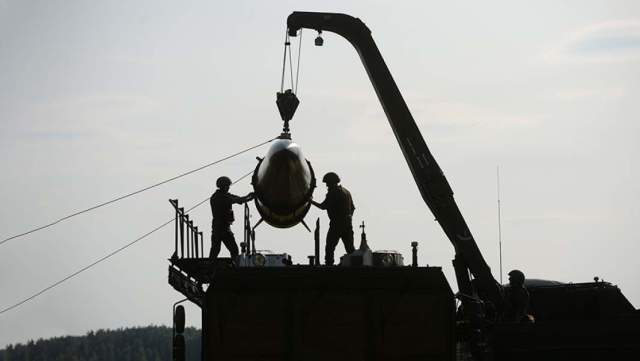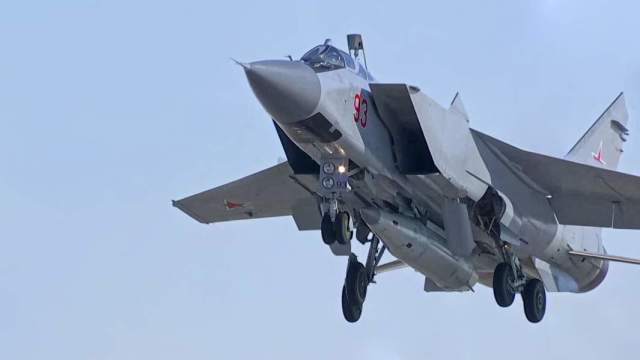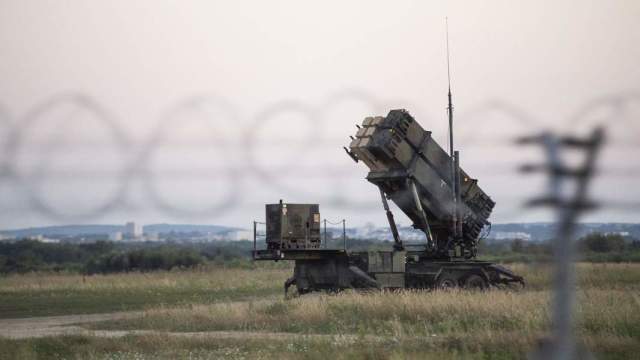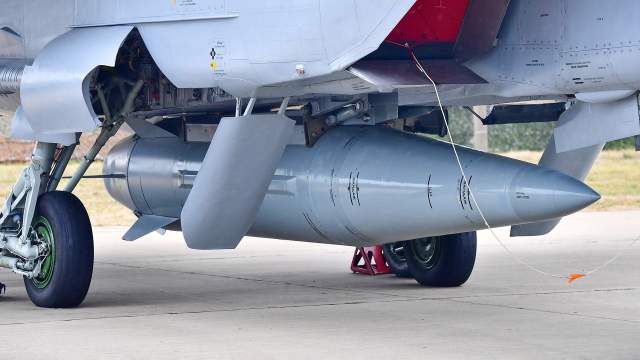And what could be the fate of the presented remains of missilesDuring the special military operation, the Ukrainian air defense was unable to intercept a single Dagger missile.
Several sources in the military department and the military-industrial complex told Izvestia about this. Moreover, most of the launches of these products were not detected at all by the VFU and NATO radar surveillance facilities. On May 9, Patrick Ryder, the head of the Pentagon press service, said about the allegedly downed hypersonic Russian missile. Together with a military expert, the founder of the Military Russia portal Dmitry Kornev, Izvestia figured out what really happened and what wreckage was shown to Western journalists in Kiev.
What was that
As sources in the military department told Izvestia, during the entire time of the SVO, the Ukrainian air defense (air defense) could not intercept a single Dagger missile. Moreover, most of the launches of these products were not detected at all by the surveillance means of the armed formations of Ukraine (VFU) and NATO.
According to the interlocutors of the publication, part of the debris presented by Kiev is really the remnants of missiles. But not "Daggers". Moreover, judging by their appearance, all the missiles were not shot down, but worked normally.
For the first time, information about the possible interception of the "Dagger" appeared in Ukrainian Telegram channels on May 4. But then the official representatives of Kiev began to deny it. However, already on May 10, the Ukrainian side presented some fragments that allegedly belonged to the newest Russian missile.

Image source: Photo: Social networks
At the same time, photos of a small exhibition of remnants of missiles of various kinds appeared in the Western media, which was organized for the media in Kiev. The main exhibit of the exposition was signed as follows: "the all-body shell of the warhead of the aeroballistic missile 9-S-7760 of the Dagger aviation missile complex. The object that was shown with this sign visually has nothing in common with the elegant sharp-nosed hypersonic missile "Dagger", but more resembles an artillery shell for guns of the First World War.
But, oddly enough, this is exactly what a concrete-piercing warhead of a modern missile or guided aerial bomb should look like. Physically, this object is located inside a streamlined and by no means concrete-piercing rocket body immediately behind the antenna of the radar homing head. When hitting the target, this warhead penetrates the structure of the head fairing, hits the concrete floors with great energy and sinks into the ground, where after a while it explodes, destroying the object. It can be a protected headquarters, warehouse, ammunition storage and any other similar purpose. It is clear that this warhead does not need to be streamlined, and it is not in the air stream when flying at hypersonic — this is the lot of the outer shell of the rocket.
What kind of combat unit was shown to us? But this is unknown. Yes, this type of penetrating warhead can be equipped with hypersonic "Dagger" missiles. But the 9M723 of the Iskander-M complex can also be used, which have a lot in common with the hypersonic Dagger in their design. Both are produced by the Engineering Design Bureau from Kolomna, and indeed, probably, only the creators will be able to determine exactly where and which missile fragment is based on phenotypic characteristics.

Iskander-M tactical missile System
Image source: Photo: RIA Novosti/Pavel Lisitsyn
By the way, the aerodynamic steering wheel of the product was lying next to the exhibition — either one or the other. There were other fragments of the structure, which may also belong to both missiles developed by the KBM.
Hypotheses
You can go through the hypotheses that can be formed by a trained observer. Can the remains shown belong to the Dagger missile complex? Can. Could these fragments belong to the 9M723 Iskander-M rocket? Can. And here it should be recalled that the "Daggers" were used in their own purposes in Ukraine a few times. But the 9M723 missiles were used by at least dozens, and their remains are definitely at the disposal of the APU. This is the first important point.
Are there emergency launches of combat missiles? Sure. The rocket starts and for some reason may cease to be controlled by the homing system. In this case, the munition falls to the ground somewhere near the target object and will not necessarily even explode, since if a malfunction of the systems occurred somewhere in the middle of the flight, the fuse may not be cocked. This can happen due to a power loss or as a result of some more serious breakdown.
When the rocket falls, it collapses. But the warhead is the most durable part of it, and it very often remains intact. In some cases, it flies dozens of meters away from the place where the product itself fell. That is, the remains of the rocket could be at the disposal of the APU and because of an emergency situation.

MiG-31 before the launch of the Kinzhal hypersonic missile
Image source: Photo: RIA Novosti/Ministry of Defense of the Russian Federation
Theoretically, a hypersonic missile can be shot down, just like any object. Place a pallet of bricks at the right time at the specified point in the path of Elon Musk's rocket, and it will stop its flight, no matter what. This is the basis for the interception of ballistic missiles by missile defense systems. The APU now has Patriot anti-aircraft missile systems of the PAC-3 modification with increased capabilities to intercept ballistic missiles.
What is the probability that such a Patriot could shoot down the Dagger? In 2015-2017, Saudi Patriots of the same modification hit Yemeni ballistic missiles of the class of old Soviet R-17 Scud missiles with varying success. And it was with varying success, that is, the probability of defeat was far from 100%. If we are talking about the modern 9M723 Iskander-M, or even more so about the hypersonic Dagger, then the probability of shooting down such a Patriot missile is much lower. But, alas, it is not zero. It is unlikely, but under the circumstances it is possible.
And now we should also recall the chronology of events. On May 4, a message appeared about the interception of the Patriot missile defense system of the Dagger missile. There was no information that a missile strike with "Daggers" was possible. Although earlier, an air alert was announced at every takeoff of the MiG-31I carrier in Belarus or somewhere else throughout Ukraine. And the AFU officials did not confirm this news. But probably a few days later — by May 9 — they decided to play the situation back and arranged an exhibition of "remains of Russian missiles" for especially close Western journalists.

Patriot anti-aircraft missile system
Image source: Photo: Global Look Press/dpa/Christophe Gateau
Apparently, Kiev has a need for reports: on the successes of the newly deployed Patriot, on the successes of the delivered tanks, Haimars and now Storm Shadow missiles. It is necessary to account for the use of any supplied weapons systems and, of course, to prepare such an unexpected "victory" and show it to the whole world is simply necessary. Which, apparently, was done. Well, the fact that the exhibits for the exhibition were found in conditions of active use of missile weapons for designated purposes should not surprise anyone.
Dmitry Kornev
Alexey Ramm

